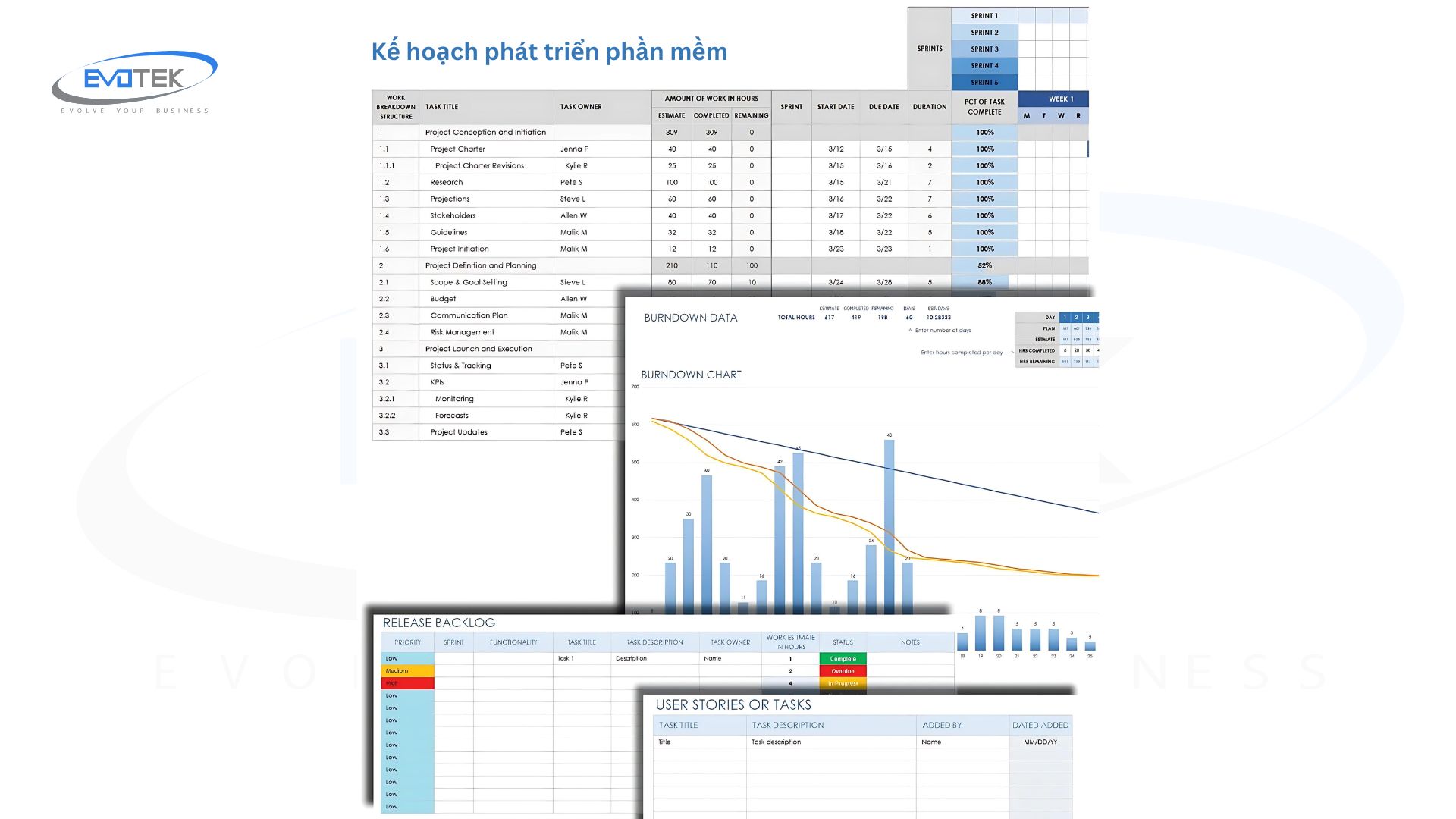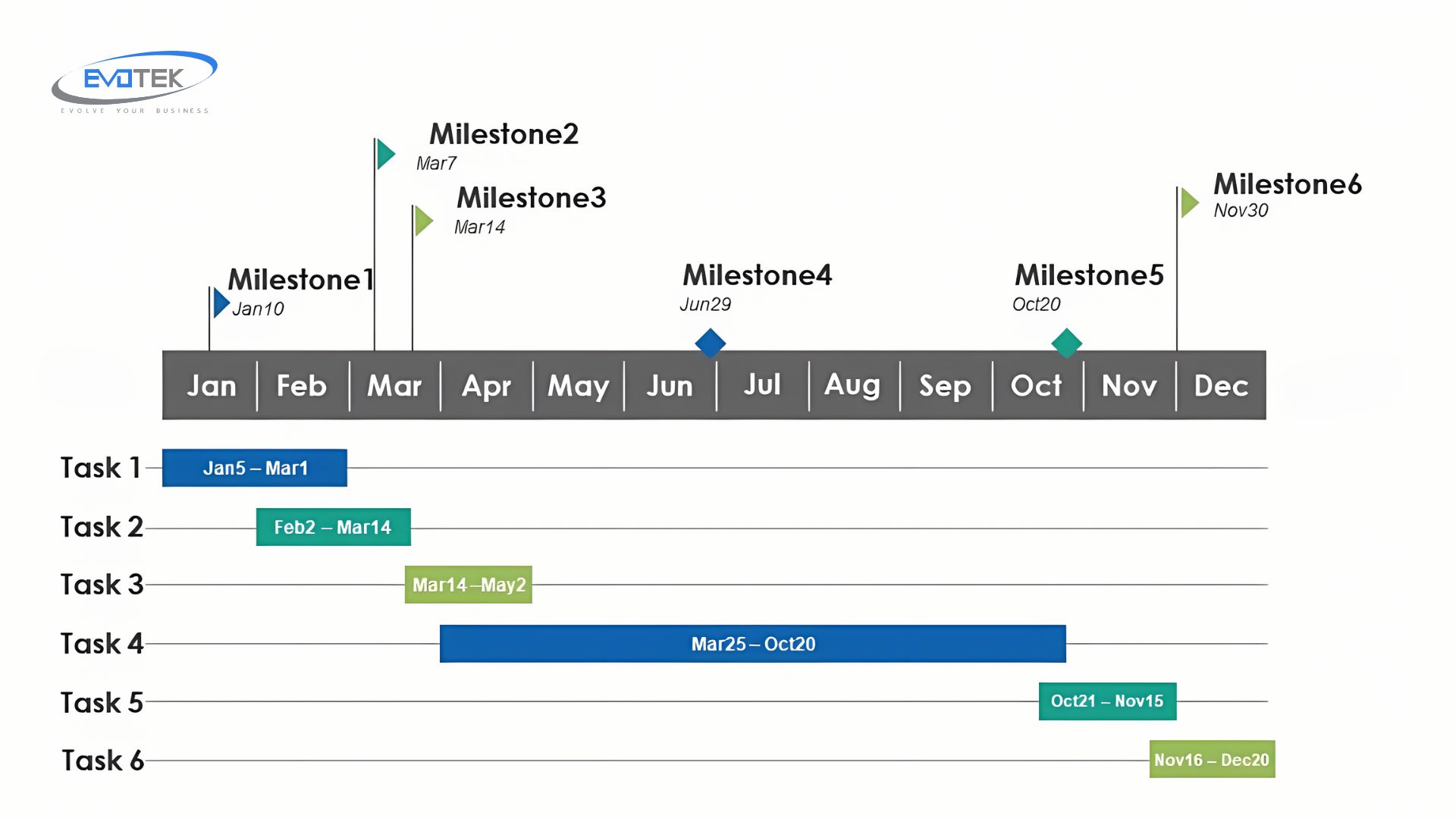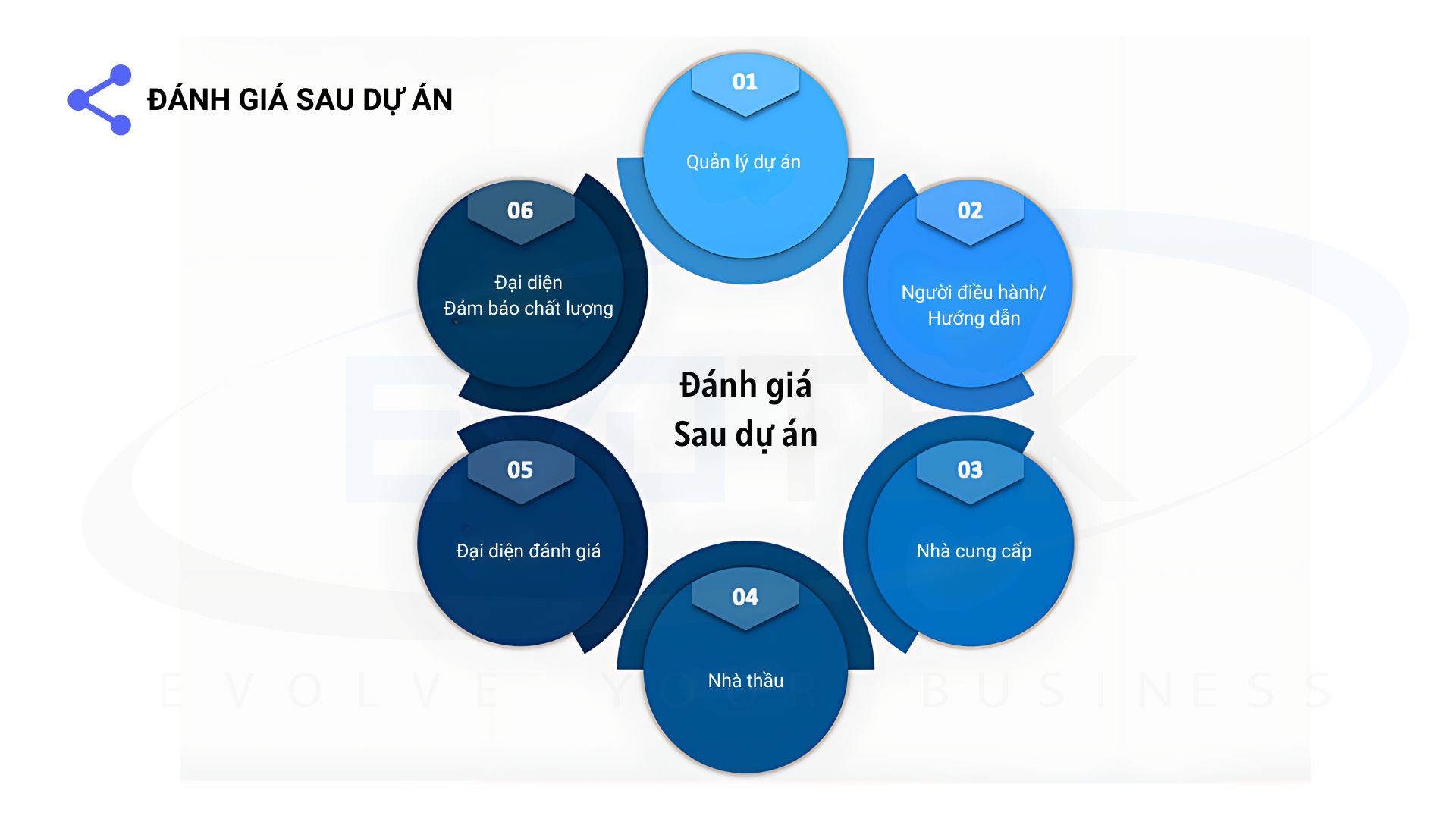Software development can pose significant challenges for organizations. Despite aiming for timely completion and staying within budget, real-world outcomes often fall short. Studies reveal that, on average, IT projects exceed their budgets by up to 45% and deliver only 56% of the expected value.
These statistics underscore the complexity of software development. However, they shouldn’t deter organizations; rather, they should emphasize the importance of a robust and meticulously crafted software development plan. Such a plan acts as a guiding roadmap for the development team, steering them towards achieving project goals.
When collaborating with an external software outsourcing vendor, the need for a clear and detailed development plan becomes even more critical. This plan facilitates effective coordination, communication, and tracking of activities between your organization and the outsourcing unit, ensuring timely delivery, adherence to specifications, and budget compliance. It’s imperative to clearly outline roles, responsibilities, workflows, timelines, success metrics, and risk management strategies within the plan.
Leveraging the experience and expertise, Evotek, a trusted partner in software outsourcing, stands ready to assist you in crafting a perfect project plan in just 9 straightforward yet powerful steps.
What exactly is a software development plan?
Before diving into the intricacies of crafting an effective software development plan, it’s essential to grasp its purpose and significance. Essentially, a software development plan serves as a detailed blueprint outlining the journey from conceptualizing a project to delivering a functional software product. It encompasses everything from the initial idea stage to implementation, ongoing operations, and maintenance. This plan is pivotal in guiding, coordinating, and monitoring the progress of the entire development process, particularly in cases involving collaboration with an external software outsourcing unit.
To kickstart the creation of a robust software development plan, project managers must address a series of critical questions, including:
- What technologies will be utilized, and what technical specifications must be met?
- Who will assume the role of project manager and oversee coordination between the organization and the outsourcing unit?
- Which personnel and resources will be allocated to support the project, including those from the outsourcing unit?
- Who are the primary stakeholders, and what is the nature of their involvement?
- What external dependencies could potentially impact project advancement, including factors related to the outsourcing unit?
- How will success criteria be defined for evaluating project performance?
- What are the key milestones, and how will they be estimated, considering the responsiveness of the outsourcing unit?
- What are the projected costs, and what assumptions underlie these estimates, including outsourcing expenses?
By addressing these fundamental questions comprehensively, the project team can establish a solid groundwork for developing a comprehensive and impactful software development plan.

Why is a software development plan essential?
While adopting an agile software development approach may sometimes raise doubts about the necessity of detailed planning, the truth is that having a thorough project plan holds significant importance in various scenarios.
Especially when collaborating with a software outsourcing agency, meticulous project planning becomes indispensable for ensuring project success, managing expectations, allocating resources efficiently, and synchronizing efforts among stakeholders. When engaging with an external unit, it’s crucial to establish clear timelines, outline product requirements, and define operational processes to enhance project effectiveness. A well-crafted project plan aids in precisely delineating the scope of work, outlining development stages, and setting deadlines for each phase. This clarity enables the outsourcing unit to grasp customer expectations accurately and allocate resources accordingly.
Moreover, detailed project plans facilitate effective coordination and communication between clients and outsourcing units. By clearly identifying key meetings, reports, and checkpoints, these plans foster transparency and efficiency throughout the development process.
9 Steps to Crafting a Software Project Plan

The first crucial step in developing a robust software project plan is to clearly define the desired inputs and outputs. Inputs encompass all essential descriptive documents, information, and requirements pertinent to the proposed project, including inputs and constraints from the software outsourcing unit. Outputs represent the objectives, products, or results anticipated to be attained through the development process, aligned with the capabilities of the processing unit.
To accurately establish these parameters, conducting meetings with all project stakeholders, including representatives from the outsourcing unit, is imperative. These meetings serve as forums to address and resolve key issues such as:
- Identification of relevant project documents and their completeness.
- Evaluation of the provided information and any potential gaps requiring additional documentation. Determination of supplementary research or documentation needed to fulfill project and outsourcing unit requirements.
- What additional research or documentation needs to be done to supplement existing documents to meet the requirements of both the project and the outsourcing unit?
- Specification of details essential for coordinating with the outsourcing unit’s workflow within the software development plan.
By engaging with all stakeholders, including the outsourcing unit, the project team gains a comprehensive understanding of the requirements, constraints, and expectations from various parties involved. Subsequently, they can tailor a software development plan tailored to the specific context, ensuring alignment with inputs and objectives while fostering seamless coordination with the processing unit.
1.Define the Project’s Workflow
The initial step in crafting a software development plan involves clearly outlining the project’s workflow at a high level. This entails examining the entire project lifecycle, from its inception to its conclusion, and segmenting it into key stages. These stages typically include:
Launch > Planning > Deployment> Delivery > Closing.
When collaborating with a software outsourcing unit, it’s essential to clearly define the roles, responsibilities, and engagement methods of the outsourcing unit within each stage.
While identifying these stages, it’s crucial not to overly prioritize the initial and final stages at the expense of the intermediary ones. Often, developers may invest significant attention into the launch and delivery phases while neglecting the crucial planning and implementation stages. However, overlooking these intermediary stages can result in significant deficiencies in the development process and coordination with the outsourcing unit.
Hence, the primary step in project planning involves constructing a well-structured workflow that encompasses the entire project lifecycle, delineates the connections between key stages, and outlines the outsourcing unit’s involvement in each stage. This workflow serves as a guiding roadmap, enabling both the project team and the outsourcing unit to have a comprehensive overview and delve into specific activities within each stage. By adhering strictly to this workflow, the development team and outsourcing unit can maintain consistency and ensure that no phase is overlooked or mismanaged.
2. Define the Scope of the Project Plan

When crafting a project plan, a crucial decision is determining the scope that the plan will encompass. Will it cover the entirety of the project or focus solely on specific aspects? This determination hinges on factors such as project complexity, anticipated duration, and the extent of work delegated to the outsourcing unit.
For smaller projects with an expected completion timeframe of around six months, detailed planning for the entire project lifecycle is imperative. However, for larger projects spanning multiple years or where a significant portion of the work is outsourced, creating a single plan to span the entire duration may prove impractical. Longer projects are susceptible to potential distortions in initial estimates due to uncertainties that may arise over time, including changes from the processing unit.
As such, for projects extending beyond six months or where substantial work is outsourced, a prudent approach is to break down the planning process into phases. Initially, a detailed plan is developed for the first six months or for the work assigned to the outsourcing unit in the initial phase. This plan encompasses requirements, risks, and the outsourcing unit’s capability to fulfill the requirements, which can be more accurately predicted. Subsequently, upon completion of the first phase, the project team collaborates with the outsourcing unit to establish a new plan for the subsequent phase. Subsequently, upon completion of the first phase, the project team collaborates with the outsourcing unit to establish a new plan for the subsequent phase. This iterative approach allows for the incorporation of lessons learned and experiences gained from the preceding phase, ensuring adaptability and optimization throughout the project’s duration.
3. Clearly Define Project Outputs and Processes
It’s paramount to clearly define the desired outputs and software development processes, particularly in collaboration with a software outsourcing unit. Failure to achieve consensus on these aspects among relevant parties, including the outsourcing unit, can result in severe consequences such as disruptions and resource wastage due to significant scope changes.
Firstly, developers must have a precise understanding of the project’s ultimate destination, envisioning the “success” state they aim to achieve. Clearly defining these outputs ensures that all stakeholders, including the outsourcing unit, grasp the overarching objective and work towards a unified goal. This process helps preempt disagreements and disparate expectations from arising later, mitigating potential risks.
In addition to outlining the desired outputs, it’s equally crucial to elucidate the software development process that will be employed to attain these objectives, alongside delineating roles, responsibilities, and the involvement of the outsourcing unit in this process. With numerous methods and approaches available, each with its own merits and drawbacks tailored to different project contexts and requirements, consensus among all pertinent parties, including the outsourcing unit, is imperative on the chosen method, coordination mechanisms, and necessary prerequisites for successful implementation of that method.
4. Estimate Workload
Following the clear definition of desired outputs and software development processes, the subsequent critical step involves accurately estimating the workload required to achieve success, including tasks assigned to the outsourcing unit. This phase necessitates active involvement from the entire project team and the outsourcing unit, along with the application of objective estimation techniques.
Throughout this process, team members and outsourcing representatives must refrain from being influenced or swayed by external suggestions or opinions regarding task completion times. Succumbing to such influences can lead to inaccurate estimates, jeopardizing the integrity of the entire project plan. Instead, all stakeholders should have the opportunity to freely and objectively share their own views and estimates.
To ensure utmost objectivity and accuracy, Agile’s Planning Poker technique is recommended. This approach mandates that all team members and outsourcing representatives provide their individual workload estimates devoid of external influences. Subsequently, these estimates are evaluated and synthesized to determine the most reasonable figure, aligning with both the project team’s capacity and the outsourcing unit’s capabilities.
This step is pivotal in laying a solid foundation for the project plan, ensuring resources and time are allocated in alignment with actual requirements and the outsourcing unit’s capacity, thereby enhancing the likelihood of project success.
5. Establish Milestones to Monitor Progress

In the course of implementing a software project, particularly when customer or partner engagements are involved, setting clear milestones is instrumental in tracking progress effectively. These milestones can denote significant stages such as “completion of design,” “prototype development,” “handover to the outsourcing unit,” or “initial product delivery.” With well-defined milestones, your organization, the outsourcing unit, and stakeholders can monitor work progress more consistently to ensure alignment with the project plan.
In fact, some organizations may include specific clauses in their contracts with the outsourcing unit regarding delays in agreed milestones, granting them the prerogative to reassess the engagement if necessary. This underscores the importance of accurately defining and adhering to progress milestones in collaboration with the outsourcing unit.
However, milestones serve not only the interests of the organization but also help sustain motivation and focus for both the project team and the outsourcing unit. By clearly delineating upcoming milestones, all parties can channel efforts and resources toward expeditiously delivering software products. With a clear understanding of the tasks at hand, they can concentrate fully on achieving the goal without distraction while maintaining smooth coordination with one another.
6. Forecast Resource Requirements
Following the determination of workload and critical milestones of the project, the subsequent step entails forecasting the resources needed for each stage, including resources from the outsourcing unit. When assembling a development team, it’s essential to ascertain when each member, including personnel from the outsourcing unit, needs to be engaged, as it may not necessitate the involvement of all resources throughout.
For instance, the initial planning and design phases often demand greater input from the design team and stakeholders compared to the development phases. Conversely, the development team and the outsourcing unit assume a more prominent role during the implementation stages.
To devise a project team and an effective cooperation plan with the outsourcing unit, factors such as:
- Project scope and allocation of work for each unit
- The pace of the development lifecycle and the responsiveness of the outsourcing unit
- Technical proficiency of team members and personnel from the outsourcing unit
- Distribution and handover process, along with dependencies on the progress of the outsourcing unit
7. Prepare for Changes
In any software development project, encountering unforeseen problems and obstacles from stakeholders is inevitable. Hence, planning to anticipate unexpected changes is imperative. Prior to commencing the project, a valuable measure is to convene a meeting between the project team and representatives of the outsourcing unit to assess all potential risks and issues that may arise from both sides, along with corresponding risk mitigation strategies.
Even in the absence of such formal meetings, developers should allocate time to prepare for changes and potential delays that may surface during project execution. Identifying potential issues in advance and formulating corresponding contingency plans enables the project team to proactively manage risks. A practical approach involves maintaining a log of actual issues and risks, alongside a list of mitigation measures, to address every eventuality throughout the project.
By integrating provisions for changes into the planning process from the outset, the project team can respond more flexibly and effectively when confronted with unexpected circumstances, thereby ensuring sustained progress and project quality.
8. Plan for Transition to Operations and Maintenance
While the primary focus of a software development project often revolves around analysis, design, and implementation phases, adequate planning for the crucial transition period post-product delivery is indispensable. Neglecting this final stage can potentially lead to obstacles even after the product has been delivered if not adequately prepared.
To ensure a seamless transition, close collaboration with the operations and maintenance service delivery team right from the outset is imperative. These teams typically maintain their own checklists of non-functional requirements that must be met, and incorporating these requirements early in the development plan yields numerous benefits.
Ample time and resources should be allocated to facilitate the handover of the entire system to the team responsible for operations and maintenance. Additionally, devising a support plan for post-implementation usage is essential to ensure a smooth transition without disrupting business operations. This project management phase plays a pivotal role in fostering a positive client relationship and leaving a lasting impression of the entire project.
9. Conduct Post-Project Evaluation

After the completion of a software development project, conducting an evaluation and learning from the experience is a crucial step that must not be overlooked. However, in reality, project teams are often swiftly disbanded and resources reallocated to other tasks, resulting in the oversight or omission of this evaluation phase. Skipping this evaluation phase means that future projects may need to spend time and resources relearning the same lessons, leading to unnecessary inefficiencies. To gather comprehensive information and feedback, the following open-ended questions should be posed during the evaluation process:
- What valuable lessons have been gleaned from this project?
- Which aspects performed well and can be replicated in future projects?
- What problems or unexpected situations arose that require remedial action for future projects?
- Have the original project objectives been achieved?
- What specific benefits did the project deliver to the organization?
Through a robust post-project review process, developers and managers can effectively identify strengths, weaknesses, and opportunities for process improvement, enabling them to enhance their capabilities continuously. This, in turn, enhances the likelihood of success for future software projects.
Post-project evaluation represents the final yet immensely significant step in the software development process. Don’t miss out on this invaluable opportunity to learn, provide feedback, and continuously improve, ensuring that each subsequent software project surpasses its predecessors.
Conclusion
While Agile software development emphasizes adaptability over strict adherence to a plan, meticulous planning remains crucial, especially as projects increase in complexity. While it may be tempting to simply assemble a team and commence work, this approach is typically suitable only for the smallest and simplest projects.
As projects grow in complexity, thorough planning becomes indispensable. While Agile methodologies embrace change, a robust project plan is necessary in many contexts to effectively manage outcomes, resources, and adhere to external constraints. Developing such a plan is paramount to avoiding budget overruns, missed deadlines, and ensuring project success.
Investing effort into crafting a comprehensive project plan increases the likelihood of delivering successful software projects on time and within budget. A detailed plan serves as a roadmap for the entire development team, enabling them to remain focused on the ultimate goal: delivering high-quality software that meets requirements within predefined time and budget constraints.
By following the nine basic steps outlined above, you can construct a solid software development plan. At Evotek, our team of experienced experts is always available to provide support at every stage of the software development process.
Feel free to reach out to us for further advice and assistance!
